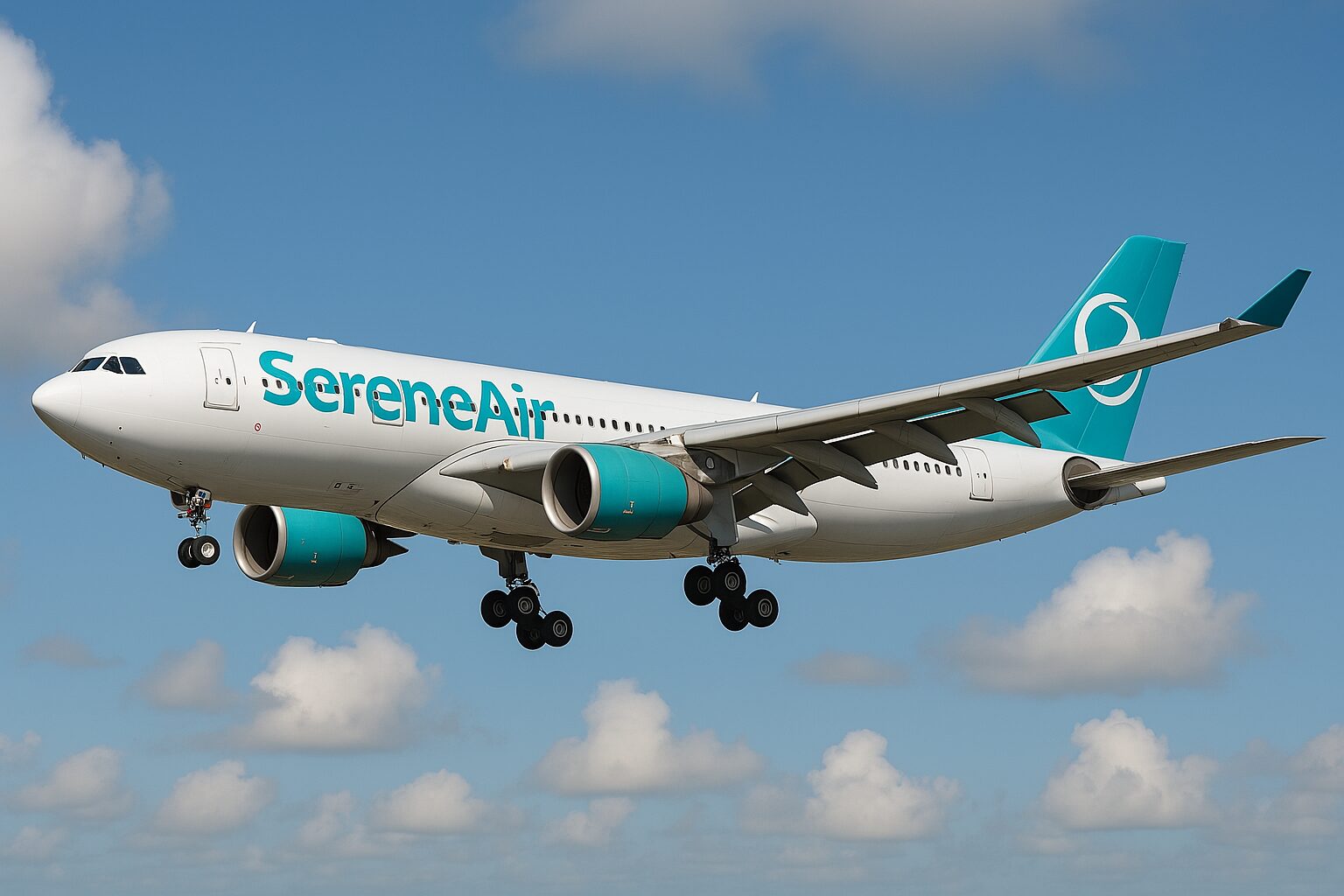Flight ER-821 | Registration: AP-BNG
Date: 1 April 2025 | Location: Lahore Allama Iqbal International Airport (OPLA), Pakistan
Introduction
On 1 April 2025, a Serene Air Airbus A330-200 experienced significant engine vibrations shortly after take-off from Lahore, prompting an immediate return to the departure airport. The aircraft, registered AP-BNG, was operating flight ER-821 from Lahore (OPLA) to Jeddah (OEJN), Saudi Arabia, with passengers and crew on board.
Approximately three minutes into the initial climb from runway 36R, the flight crew observed severe vibrations from one of the General Electric CF6 engines. In response, they levelled off at 3,000 feet, declared an emergency, and returned to Lahore. The aircraft landed safely without further incident around 20 minutes after departure. There were no injuries reported.
Flight Details
• Aircraft Type: Airbus A330-243
• Engines: 2 × General Electric CF6-80E1A4
• Operator: Serene Air
• Tail Number: AP-BNG
• Flight Number: ER-821
• Callsign: Serene 821
• Route: Lahore (OPLA) to Jeddah (OEJN)
• Date of Occurrence: 1 April 2025
• Phase of Flight: Initial Climb
• Altitude at Onset: 3,000 feet MSL
• Occupants: Not officially disclosed (standard A332 configuration: approx. 280–300)
• Runway in Use: 36R
• Weather Conditions: Reported VMC (Visual Meteorological Conditions)
Sequence of Events
Take-off and Initial Climb
Flight ER-821 departed from Lahore’s runway 36R in normal conditions and began a standard climb towards its cruising altitude. Shortly after take-off, the flight crew noticed significant engine vibrations on one of the CF6 engines. The vibration warning indicators exceeded standard operating limits.
Decision to Return
Recognising a potential engine anomaly, the crew ceased further climb at 3,000 feet and initiated a turn back towards Lahore. Standard checklists for engine vibration and abnormal engine indications were performed. The flight was prioritised for landing and coordinated with ATC throughout.
Safe Landing
The aircraft landed safely back on runway 36R approximately 20 minutes after departure. Emergency services were on standby but were not required. The aircraft vacated the runway and was escorted to a remote stand for post-flight inspection.
Aircraft Status and Replacement Flight
The occurrence aircraft, AP-BNG, remains grounded at Lahore over 27 hours after the event as engineering teams conduct detailed inspections. Preliminary information indicates the vibration may have stemmed from a potential imbalance or engine component fault.
A replacement aircraft, Airbus A330-200 registration AP-BNF, was dispatched and successfully completed the flight to Jeddah the following day with a delay of around 21 hours.
Technical Considerations
Engine Type and Common Vibration Causes
The General Electric CF6 engine family, widely used across long-haul widebody fleets, is known for reliability but can occasionally experience vibration issues due to:
• Fan blade damage or imbalance
• Foreign Object Damage (FOD)
• Loose nacelle components
• Gearbox or accessory drive anomalies
• Sensor malfunctions providing false readings
Vibration levels are continuously monitored in-flight, and exceedances typically trigger ECAM warnings, prompting immediate crew action.
Data Monitoring and Diagnostics
Post-incident, the aircraft’s Quick Access Recorder (QAR) and maintenance diagnostic systems will be key in identifying the root cause. Data from engine vibration monitoring sensors, N1/N2 speed differentials, and oil pressure/temperature values will be analysed.
Airline Response
Serene Air confirmed the event and stated that the crew acted in accordance with standard operating procedures. The airline emphasised its commitment to safety and noted that no injuries occurred. Passengers were accommodated for the delay, and a replacement aircraft was arranged.
The incident has been reported to the Pakistan Civil Aviation Authority (PCAA), which is expected to monitor or lead any investigation alongside airline engineering staff.
Summary & Safety Outlook
This incident highlights the importance of real-time engine health monitoring and crew training in dealing with in-flight anomalies. The prompt decision to return and the effective execution of emergency protocols ensured a safe outcome with no harm to passengers or crew.
Pending results from maintenance investigations, the aircraft will remain out of service until cleared for flight.
Disclaimer
This article is based on publicly available information and reports as of 2 April 2025. While every effort has been made to ensure accuracy, we cannot guarantee the completeness of the information provided. If you are the rightful owner of any referenced content and wish it to be removed, please contact takedown@cockpitking.com.
